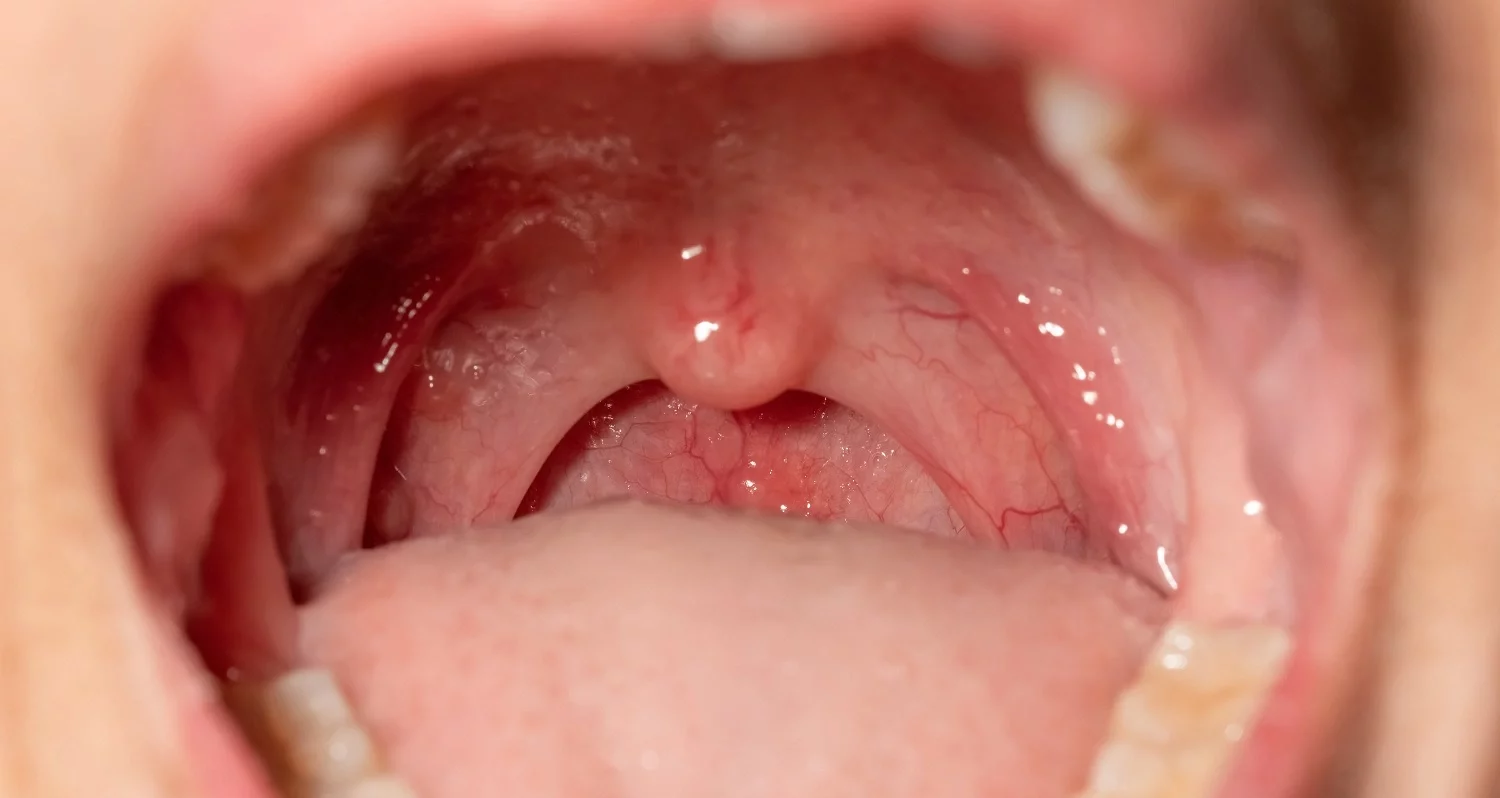Last Updated on: 4th December 2024, 04:20 pm
get rid of gag reflex
An increased gag reflex can be a reason to hate dental appointments. No one likes feeling like they could throw up at any moment! But there is no reason to run away from that needed dental treatment – the one that has been postponed for so long. In this article, doubts about how to get rid of the gag reflex will be resolved with tips on reducing its intensity.
What is the Gag Reflex?

The gag reflex is a natural, involuntary bodily response that contracts the muscles in the throat to prevent a person from swallowing food or foreign objects that could cause illness, poisoning, or choking. Sometimes, patients are very sensitive to certain stimuli, which becomes a real problem when brushing their teeth, taking medication, or visiting the dentist.
How Does the Gag Reflex Work?
In the back of the mouth structure with very sensitive nerve endings (such as the palate, the walls of the pharynx, and the uvula), which, when stimulated, activate an area of the brain that responds with muscle movements and spasms, popularly known as arcades. These protect the throat from the passage of foreign bodies into the digestive and respiratory tracts. The area of the brain that receives these stimuli is very close to the areas that control vomiting, salivation, sweating, and tearing, which explains why retching can be accompanied by these reflexes.
In addition, it has been shown that these neural pathways can also be modified or stimulated simply by imagining an unpleasant experience, so it is believed that by distracting the brain from these thoughts, the gag reflex could be stopped.
What Causes Gag Reflex?
The gag reflex is a normal defense mechanism, which can be generated by various factors:
Psychological:
They can cause or worsen retching:
-
- Fear
- Depression
- Stress
- Anxiety
- Panic
Physical stimuli that affect the senses
-
- Tactile: They are the most frequent. Touching the posterior area of the palate or the tongue generates muscle contraction and retching. It can also happen when feeling certain unpleasant textures.
- Visual: Some patients may feel nauseated when looking at blood, or the instruments and materials to be used during the consultation. Also, it can happen when observing another person having an arcade.
- Acoustic: Hearing other people gagging or noise from rotating dental equipment (such as dental burs).
- Olfactory: Strong unpleasant odors, or those that invoke past experiences.
- Taste: Bad taste.
Others:
-
- Sensitivity or allergic reaction to certain liquids or foods
- Health problems such as acid reflux or multiple sclerosis
- Intense physical activity
On many occasions, the increased gag reflex occurs due to a combination of physical and psychological causes, since the physical stimulus is usually accompanied by an uncomfortable thought or sensation that invokes nausea.
How to Get Rid of Gag Reflex?

As explained, the gag reflex is a defense mechanism with an important reason for being. Therefore, it is not advisable to remove it totally as it could be dangerous. The dentist can use several techniques to decrease its intensity and temporarily control it, making dental care less uncomfortable:
Desensitization
With enough time and patience, it is possible to progressively desensitize the area, accustoming the back of the palate and the tongue to make contact with certain elements, such as the toothbrush. A technique has been suggested that consists of locating the point where the gags are generated and rubbing it between 15 and 30 seconds, then repeating this 2 times a day until the intensity of the reflex diminishes.
Oral and topical medications
-
- Tranquilizing drugs: Anxiolytics can be useful when the gag reflex is caused by nerves or anxiety. In any case, these must be prescribed only by a health professional.
- Topical anesthetic: Elly anesthetic can be applied to the sensitive area before the dental procedure. Although it has only a temporary effect, it is important that it be applied by a dentist as he or she will avoid applying it to areas of the pharynx that would inhibit the cough reflex and leave the patient defenseless when choking.
Acupuncture
This is a very old Chinese technique of alternative medicine, which stimulates specific points in the body, generating reflex inhibition while the dental procedure is performed. Small sterile needles are used that when placed strategically, stimulate nerve fibers that inactivate the reflex. There are two specific points: one is located on the chin just below the lower lip, and the other on the front of the wrist. This technique should only be used by a properly trained professional.
Acupressure
This is similar to acupuncture, but needles are not used. It consists of exerting pressure on specific points to decrease the reflex and can even help with toothache. It has been reported that making a fist with the left hand over the thumb with sustained pressure, but without pain, could help to temporarily suppress retching.
Modification of dentures
If the gag reflex prevents the use of dentures, the dentist can modify the dentures by removing or slightly trimming the palate area. It is also possible that the treating dentist suggests the use of training prostheses so the patient gradually gets used to the sensation.
Anesthesia
When needed anesthesia should always be done under the supervision and indication of a dentist, as well as on the recommendation of your treating physician since according to your health condition, it is possible that this alternative cannot be used:
-
- Local anesthetics: Injecting lidocaine or other anesthetics into the area can help decrease the reflex.
- In-office conscious sedation with nitrous oxide or other substance.
- General anesthesia: this is the last resort when no other form of sedation, medication, or therapy is helpful.
Psychological Techniques
These techniques disconnect the mind from the stimulus that causes the reflection. These include:
-
- Relaxation techniques: Any modification in the environment that helps the patient feel less tense during dental care is valid. Many people find it relaxing to listen to music or use aromatherapy.
- Mindful breathing management.
- Distraction techniques: these temporarily divert the patient’s attention from the distressing and uncomfortable procedure. You can try playing counting games or thinking about lists of names or objects, keeping your mind busy so you don’t think about the unpleasant feeling.
- Hypnosis.
Other Techniques
-
- Placing salt on the tip of the tongue stimulates the front part of the tongue, “distracting” it from the sensation that is occurring in the back part and momentarily inactivating the reflex.
- Low-power laser stimulation in the pharyngeal area.
- Transcutaneous electrical stimulation: electrical impulses applied directly to the nerves that regulate the gag reflex before performing any dental procedure.
- The use of earplugs helps relax the patient from unpleasant auditory stimulation.
Conclusion
An increased gag reflex can make it difficult and even impossible to undergo dental treatment or partake in some daily activities. The good news is that this occurs due to a combination of physical and psychological causes, so there are various techniques that could help control it such that dental appointments are less uncomfortable and traumatic.
Contact us
If you have any questions about this or other topics, you can contact us at Channel Islands Family Dental as well as our page on Facebook. We look forward to your visit and we will make a timely diagnosis. Our dentists in Oxnard, Santa Paula, Ventura, Newbury Park, and Port Hueneme will be able to guide you toward the best treatment to take care of your health and give you back your best smile.
Bibliography
- Ambokar, A., Shamim, S., Shetty, U., Joshi, M., & Ghadage, M. (2022). GAG REFLEX: AN OVERVIEW. NeuroQuantology, 20(7), 793-804. Available at: https://www.researchgate.net/publication/362537234_GAG_REFLEX_AN_OVERVIEW
- Kaira, LS, Dabral, E., & Kukreja, HS ( 2014). Gagging a review. Journal of Health and Allied Sciences NU, 4(01), 149-155. Available in: https://nitte.edu.in/journal/March%202014/149-155.pdf
- Anand MV, Rai R, Bettie NF, Ramachandran H, Solomon, Praveena S. Acupuncture – An effective tool in the management of gag reflex. J Pharm Bioallied Sci. 2015 Aug;7(Suppl 2): S677-9. doi 10.4103/0975-7406.163601. PMID: 26538942; PMCID: PMC4606684. Available in: https://www.ncbi.nlm.nih.gov/pmc/articles/PMC4606684/
- PrashantiKumbargere, E. (2015, 1 October). Control of the gag reflex in patients undergoing dental treatment. Cochrane Library. Retrieved December 3, 2022, https://www.cochranelibrary.com/cdsr/doi/10.1002/14651858.CD011116.pub2/full
- Frothingham, S. (2019, August 26). How to Stop or Desensitize Your Gag Reflex. Healthline.https://www.healthline.com/health/how-to-get-rid-of-gag-reflex
- Bilello, G., & Fregapane, A. (2014). Gag reflex control through acupuncture: a case series. Acupuncture in Medicine, 32(1), 24-27. Available at: https://journals.sagepub.com/doi/abs/10.1136/acupmed-2013-010377



